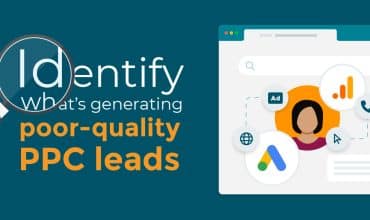4 data-backed ways to drive sky-high ROI from social media marketing
If you’re wondering whether social media marketing is really making a difference for your business, consider this: today, consumers spend more than two-and-a-half hours daily on social platforms. This means, for almost three hours every day, you have a good window of opportunity to reach your customers with your products and services.
OK, it’s way easier said than done. But it’s clear businesses are invested in trying as hard as they can. That’s because, according to a survey of 60 marketing leaders conducted by Mediahawk, social media platforms now sit at the top of the martech stack for the vast majority of marketing teams.
But wide use doesn’t always mean best use. Being present on social media may seem like a prerequisite for digital marketing success these days. But many businesses still struggle to see a return from their social media activity and investment.
Using data to maximise the ROI of social media marketing
So, this begs the question: if you’re invested in social media marketing for your business, how do you ensure it delivers a healthy return?
It’s probably one of the biggest (and most frustrating) questions in digital marketing. And it’s something marketing experts have pored over for years. But when it comes to delivering ROI from social media – and using data and analysis to prove it, too – there are a few things you can do right away to get on the right track.
1. You can only improve what you measure
Although most businesses are on social media, many don’t achieve a great return on investment from it. This is largely due to a lack of focus on gathering data from social media campaigns and analysing it. Because without measuring your performance, you can’t effectively improve it.
To address this, it’s important to first outline the reasons why you are using social media. Is it for brand awareness, thought leadership, lead generation, lead nurturing, or customer retention? What are your goals for social media marketing? Do you want to drive a specific number of users to your website or nurture existing leads?
With answers to these questions nailed down, you can bring in appropriate martech tools to collect analytics data and apply relevant metrics to gauge your success.
2. Make sure your social media content truly resonates
One of the major issues faced by brands across industries is a lack of engagement with their social media posts. If you are not receiving the social engagement you’re hoping for, it’s highly likely your content is simply not reaching your intended audience – the individuals who are most likely to become valuable leads for your business.
To be sure that your content connects with your intended audience, it’s essential that you use your campaign data to gain a comprehensive understanding of their online behaviour, the types of content that pique their interest, and, most importantly, the platforms they visit the most.
For example, for care homes, Facebook has proven to be a consistent driver of website traffic. That means building an effective Facebook content strategy will play an important part in delivering social media marketing ROI for care homes.
To do this, you should look to see whether there are industry influencers garnering attention from your customers and prospects. What topics are they addressing in their posts, and which ones generate the most responses from their followers? Who are they interacting with? These are the indicators you should be searching for.
What’s more, you can learn your target audience’s interests and pain points through social media listening – and also by listening to the customer phone calls that come into your business.
By examining the discussions and posts of others within your ecosystem – particularly those that are generating the highest levels of engagement – you’ll better understand the type of content that’s likely to be successful for you.
3. Use social media to nurture existing customers
In addition to attracting new customers, social media can help you nurture existing ones. It’s important to foster customer loyalty and develop relationships by acknowledging the accomplishments and triumphs of your current customers, while also providing informative and educational content to maintain engagement with your business.
On social media, you can answer questions from your community and teach them better ways of using your product or service.
For example, TikTok is a great platform to share quick, easily digestible video content – such as hacks for solving issues your customers may be facing. This kind of easy-to-consume but educational content is ideal for engaging existing and new customers alike and keeping your business front and centre in their minds.
Maintaining this level of engagement will inspire customers and potential new customers to endorse your business to their own network.
4. Use social media ads to help drive ROI
Today, social media marketing typically accounts for more than 10% of the average company’s marketing budget. To increase return on investment, it’s imperative that this budget is used to generate high-value leads and customers.
Fortunately, you don’t have to rely on organic activities on social media to drive results. Pay-per-click (PPC) ads on social media can also help you deliver a strong pipeline of leads for your business and reinforce your social media ROI.
When it comes to the automotive industry, for example, we know that PPC is a significant driver of web traffic – as well as Google Business Profile, but that’s another story.
The key to delivering greater social media ROI through your ads is all in the planning and effective data analysis. If you’re already posting organic content onto social media, you can use the insight and data behind these to inform your ad strategy.
To optimise your social media advertising, you should track which organic posts are resonating with your followers, and which ones are not, based on clicks, likes, shares, comments, and conversions. The high-performing messages can then be used as potential content for social ads.
When branching out to a new network with social media advertising, you should start small and use what you’ve learned from your organic posts as a starting point. However, keep in mind that the lessons may not translate across all social networks.
Measuring your results is crucial to determine whether you’ve hit your targets, identify what worked and what didn’t, and make improvements in the future. Having concrete data about the value your ads bring to the company, such as purchases or leads, is a key part of proving ROI. Proving that your ads are generating results can ensure that you receive the budget needed to continue your work.
The final thought: securing future budget
So, if you’re invested in social media marketing but need to increase ROI, these pointers should be a good starting point. Just remember to make the most of the data that’s available to you, and measure, measure, measure. Then put in place the right mechanisms to report and prove the value of your social media activities. That way, when you’re running with social media as your top martech tool, you’ll be able to justify the investment and secure future budget.
Subscribe to Mediahawk
"*" indicates required fields

Read our latest marketing analytics survey report and discover what the priorities for marketing leaders and their attitudes towards marketing technology.



